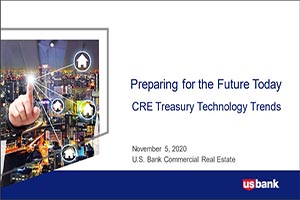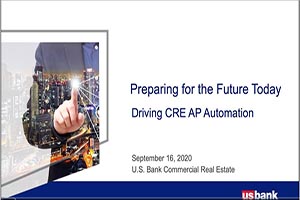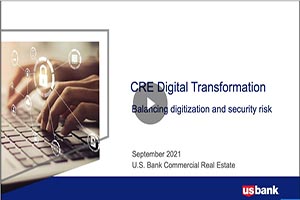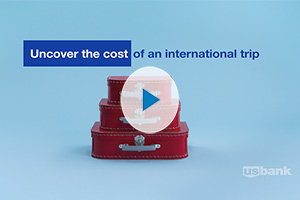Discover tools and insights on how to prepare and what to expect when transitioning to a new custodian.
By Greg Gamble, Vice President, U.S. Bank
In an ever-evolving financial landscape with increasing regulations and compliance requirements, the thought of converting to a new custodian can be daunting, but it doesn’t have to be. With some minor preparation and the right choice in custodian, your transition can be simple, efficient and successful.
Preparing for your transition
The first, and most important, step when preparing to convert to a new custodian is to review the contracts and agreements you have with your current custodian. These documents may include stipulations or legal ramifications that could prohibit you from converting to a new service provider. Make sure to involve your legal counsel in reviewing these documents before you begin a transition. This will help ensure your new custodian won’t have to stall or suspend your conversion.
After reviewing your contracts, you should collect any information needed to transfer your assets. There are multiple regulations and due diligence obligations imposed by the U.S. government on financial institutions that require the collection of certain information from organizations and individuals that custodians serve. These regulations include Anti-Money Laundering (AML) laws, the Bank Secrecy Act (BSA) and the Know Your Customer (KYC) guidelines, among many more. You shouldn’t have to worry about these; a proactive custodian will be aware of all of the federal regulations with which they must comply. They’ll clearly communicate what information they’ll need to gather from you throughout the conversion process.
The checklist below includes items you’ll want to prepare and analyze before the conversion to help ensure a smooth and successful transition. Make sure you determine and gather the following:
- Up-to-date contact information for your current custodian
- Contact information for all individuals at your organization who will be involved in the conversion process
- Contact information for all of your investment managers and alternative asset providers or issuers
- File interfaces and transmissions protocol with your organization, separate from information retrieved from the custodian’s website, that may need to be established with the new custodian
- A target conversion date or any conversion deadlines you’d like to meet
- Any relevant organizational information about your company (i.e., multiple entities, subsidiaries, affiliates, etc. that will be involved with the conversion, any tax reporting requirements, etc.)
- Information regarding the assets or portfolio being transferred, including:
- Lists of current holdings and assets
- Details on the makeup of the portfolio (i.e., mutual funds, commingled funds, ETFs, etc.)
- Any involvement of an investment manager(s)
- Current or future needs for global custody and trading
- Copies of current statements
It may also be helpful to spend some time thinking about what you and your organization truly want from a new custodian. Identify your reasons for converting, then, be sure to make those reasons known to the new custodian at the outset of the transition process. This will help ensure the custodian creates a conversion plan that prioritizes the implementation of the products and services that are most important to you.
What to expect from the conversion process
An experienced custodian will handle the majority of the work involved in the conversion process. Once you’ve been introduced to the personnel who will be handling your conversion, they’ll guide you through each step in the process until your transition is complete. You should share the information you prepared during the initial stages of the conversion, as the new custodian will need this to successfully transfer your assets. While there may be new account forms that you are required to fill out, the conversion team should assist you in completing them quickly and accurately.
Many custodians also initiate the contract drafting and signing procedures at the beginning of the conversion. This is because the custody agreement and any other necessary agreements and documents will need to be in place before your assets can be transferred. This is often the component of the conversion that requires the greatest dedication of time from the client. To help progress this phase smoothly and efficiently:
- Alert your legal team or attorney to these incoming documents
- Communicate the status of the contracts to the personnel in your organization who must sign off on the agreements
Once the required information has been gathered and the agreements are in place, you should be able to dictate your level of involvement. There is always a chance that something is discovered during the conversion that will require your attention, but this can be addressed on a case-by-case basis. A proficient custodian will keep you updated throughout the rest of the process according to your preferences. This may involve scheduling weekly update calls or simply sending email updates on relevant items, allowing you to participate at the level you prefer.
The time it takes to complete a custodian conversion will vary based on several factors, including the size and complexity of your portfolio. With the proper preparation and responsiveness from all parties involved, you can successfully convert to a new custodian in a matter of weeks.
The importance of dedicated resources
When evaluating potential new custodians, it is critical to consider the resources the custodian will make available to you both during the transition and post-conversion. This is particularly important when transitioning a large or complex portfolio. When a conversion involves multiple professionals, departments and parties from both the client and the custodian, it can be easy for critical tasks to fall through the cracks and delay the conversion. A dedicated conversion team will manage the overall transition and keep all parties accountable for their assigned tasks. This way, you can rest assured that the conversion will progress smoothly and according to schedule.
Additionally, working with a dedicated point of contact or conversion team allows the custodian to become familiar with your organization and your unique requirements. This helps ensure that the right products and services are implemented at the outset. It also mitigates confusion or last-minute changes that are sometimes necessary when new client information or requirements are uncovered later in the conversion process.
Having access to dedicated conversion resources also helps ensure that any questions or concerns you have during the transition will be addressed in a timely fashion. The amount of new information and direction you receive during a conversion can be overwhelming. It can be frustrating if you are passed around to various employees or departments when trying to get your questions or concerns answered. With a dedicated conversion contact, you will have one central person to reach out to for process updates and information. This will help you keep your focus where it belongs – on your organization and your day-to-day business.
Conclusion
The conversion to a new custodian doesn’t have to be burdensome on you or your organization. By dedicating time prior to the transition to review your current legal contracts, gather basic organizational and financial information, and outline your requirements for a new custody provider, you can set your company up for success.
Transitioning to a new custodian should be a simple and efficient process. That’s why we prioritize seamless delivery of our products and services so that you can focus on achieving your goals. For information on custody products offered at U.S. Bank, visit usbank.com/custody.
Greg Gamble is a vice president at U.S. Bank and serves as a relationship manager for a select group of clients with institutional trust and custody products. He joined U.S. Bank in 1996 and has more than 25 years of experience in the financial services industry.












































































































